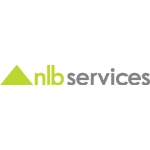© 2025 Next Level Business Services Inc. All Rights Reserved.
HR Analytics: Benefits, Key Metrics, and Implementation Guide
By NLB Services
As organizations make hefty investments in human resource development, stakeholders are keen to see the results in a presentable, data-driven way. That’s where HR analytics can play a pivotal role. HR Analytics, in simple terms, measures the success and failure of how an organization performs when it comes to its talent management.
HR analytics measures a broad range of data, but all of it is centered on the people function. The core goal of HR analytics is to utilize data-driven insights in initiating and implementing informed decisions about managing and optimizing the workforce.
This blog will explore what HR analytics is, its key benefits, how HR analytics is different from people analytics and workforce analytics, he essential metrics that are tracked in HR analytics, how organizations can implement HR analytics and the challenges to watch out for.
Key Benefits of HR Analytics
Enhanced Decision-Making
HR analytics enables better decision-making due to the availability of data-driven analytics. HR professionals get access to tools and insights that allow them to make informed decisions. HR analytics is all about studying comprehensive data and identifying key areas where and what type of intervention is needed.
Improved employee retention and engagement
HR analytics helps HR managers identify the trends and patterns in employee turnover. Organizations, through HR analytics, can understand the underlying cause of attrition and develop strategies that help improve employee retention and engagement. For example, if data reveals employees are leaving at a higher rate from a particular department, the organization can investigate and address main challenges such as workload, management style, and lack of career development opportunities leading to this outcome.
Improved Employee Performance
Regular assessment of employee performance data helps identify high-performing employees and areas where improvement is needed. This crucial information can be used to customize development programs, assisting employees to improve and provide targeted feedback.
Cost-saving through optimized HR processes
HR analytics can help streamline recruitment and training processes, leading to cost savings. By analyzing the cost-effectiveness of different recruitment channels, organizations can allocate their budgets more efficiently. Additionally, understanding the return on investment (ROI) of training programs allows companies to focus on the most impactful initiatives, reducing unnecessary expenses.
Enhanced Workforce planning
Insights received from HR analytics help organizations anticipate employee needs better and plan accordingly. For example, predictive analysis in HR allows organizations to forecast future hiring needs or workforce assessment on productive hours whether they are overworked or underworked. Through this, organizations can be in a better position to plan workforce requirements and meet future demands.
Essential HR Metrics to Track
For organizations to reach new heights and thrive in a competitive market, effective human resource management is crucial. HR analytics plays a pivotal role in HR management by providing data-driven insights that help make better decisions.
HR analytics covers essential metrics that help organizations drive valuable insights that reveal how effective HR practices and strategies are. Here are some HR metrics that you can track in HR analytics:
Employee Turnover Analysis
Employee turnover rate refers to the employees leaving the organization. High employee turnover signifies that the employees are facing challenges concerning the workplace, satisfaction, leadership, or company culture.
Time to Hire
Optimizing recruitment efficiency, through this metric, HR managers can track the average time taken from when a job opening is posted to when a candidate accepts the job offer. If the time to hire is high, there can be a decline in productivity.
Employee Engagement
Employee engagement is a crucial part of human resource management, HR analytics helps evaluate employee engagement. A high engagement rate is associated with higher productivity, better retention, workplace satisfaction, and improved employee morale.
Training ROI
Another metric that is measured in HR analytics is training and development metrics, organizations try to measure the effectiveness of training programs and their ROI. It analyzes participation rates, completion rates, and impact on employee performance. It helps identify skill gaps and invest in relevant training development.
Cost per Hire
This key metric measures the total cost of hiring new employees, including advertising, recruitment agency fees, and onboarding costs. This metric helps organizations understand the efficiency of their recruitment process and identify the scope of cost savings.
Apart from these metrics, other metrics that can be analyzed during HR analytics are quality of hire, employee net promoter score, absenteeism rate, salary averages, and diversity ratios. It varies based on the organization’s specific requirements.
Data Collection and Management in HR Analytics
For effective HR analytics, organizations need to factor in the quality and accuracy of data as it can greatly impact the analysis and can be a disaster for an organization’s HR strategy if done the wrong way. HR analytics involves data collection, storage, and analysis to get the best data-driven outcomes for informed decision-making.
Here is a breakdown of how data can be collected and managed::
Data Collection
Gathering accurate and relevant data is critical in HR analytics. Data collection can happen through various sources such as employee engagement platforms or human resource information systems (HRIS), performance reviews, training programs, recruitment records, surveys, feedback forms, and performance management systems.
Data Analysis
Data analysis involves employing the right tools and methodologies to interpret the collected data. This means using statistical analysis, predictive modeling, and data visualization techniques to analyze data. Tools like Power BI and Excel can be used to analyze large amounts of data and show it in a presentable way.
Data Privacy
Another important point while dealing with data is data privacy. Data sensitivity should be handled with due diligence, ensuring compliance with data protection regulations and ethical standards. Companies must adhere to data privacy laws such as GDPR or CCPA to ensure employee privacy.
Accurate data collection and management are foundational to using HR analytics for strategic advantage. It ensures that the insights are reliable and actionable, accelerating organization goals and improving workforce management.
Implementing HR Analytics: A Step-by-Step Guide
While companies try to find ways to implement analytics, few organizations have actually cracked the code. A 2021 study by NewVantage, published by HBR found only 39% of executives believe their organizations manage data as an asset.
To get ahead and become efficient in the HR arena, organizations need to work towards analyzing large data sets and gaining insights for decisive actions. If you are aiming to implement HR analytics in your organization here is a step-by-step guide to get you started:
Step 1: Setting Clear Objectives and Selecting Relevant Metrics
In the first steps, HR leaders must clearly define what they want to accomplish through HR analytics. Whether they are aiming to reduce employee turnover, improve the recruitment process, or boost employee engagement. Beginning with clearly defined goals will help management strategize better and plan accordingly.
Do not forget to pick metrics that will help managers track progress. For example, if the goal is to reduce employee turnover, leaders might look at metrics like turnover rates, employee satisfaction scores, and feedback from exit interviews.
Step 2: Building a Data Infrastructure to Support Analytics
Next, a solid foundation is needed for your data. This translates to having the right tools and systems to collect, store, and manage the data. Invest in good HR software like Rippling or HCM SAP that can handle lots of data and works well with other systems like payroll and performance management. Make sure your data is clean, accurate, and up-to-date as reliable data leads to reliable insights.
Step 3: Integrating Predictive Analytics for Proactive Decision-Making
As you finish setting up data infrastructure, you can move to begin predictive analysis. This means looking at past data to predict future trends and outcomes. For example, predictive analytics can help you figure out which employees might be thinking about leaving and why. By understanding these patterns, you can take steps to address issues before they become problems. This will help make your HR strategies more proactive and effective.
Step 4: Aligning HR Analytics with Business Strategy
Last, make sure your HR analytics efforts are aligned with your overall business strategy. This means that the insights you gain from analytics should support your organization’s goals and objectives. Through this, HR analytics can be used to provide data-driven recommendations that can help achieve business goals. This ensures that HR analytics is not just an isolated function but a strategic partner in driving business success.
By following these steps, you can effectively implement HR analytics in your organization, leading to better decision-making, improved HR processes, and a more engaged and productive workforce.
Challenges and Ethical Considerations in HR Analytics
Implementing HR analytics has its challenges and ethical considerations that must be taken into consideration before you implement HR analytics. Here are some of the most common ones:
Challenges that organizations face in HR analytics
Data Quality
Ensuring the accuracy, completeness, and consistency of data are pivotal in HR analytics. Poor data may lead to incorrect insights and bad decisions. Organizations often struggle with data silos, outdated information, and inconsistent data entry practices.
Resistance to Change
There are chances of friction between employees, managers, and leaders in adopting HR analytics due to fear of the unknown or discomfort with data-driven decision-making or being too reluctant about it. This resistance can hamper the tight integration of analytics within the department.
Privacy Concerns
Collecting and analyzing employee data raises significant privacy concerns. Employees may feel uncomfortable with the extent of data being collected and how it is used.
Ethical considerations that organizations must take care of
While managing HR analytics, HR leaders must ensure that analysis and outcomes are free from biases that can lead to unfair treatment and missed assessment of employees. Another ethical consideration is protecting the privacy and confidentiality of employee data. Organizations must comply with data protection regulations like GDPR and ensure that data is used ethically and transparently.
How to overcome the challenges?
Organizations can work on improving data quality by adopting robust data management practices, conducting regular data audits, and standard data entry procedures. If you face resistance, start creating a culture of data-driven decision-making by offering training and support to employees and managers. Also, communicate the benefits of HR analytics clearly and involve stakeholders in the implementation process.
Conclusion and Future of HR Analytics
Many organizations are looking forward to implementing HR analytics to better manage and transform their workforce. Numerous benefits such as better decision-making, reduced turnover, cost savings, and enhanced employee engagement make it a tempting data-driven exercise that human resource leaders aim to execute within their organization.
However, certain challenges are also there such as data quality issues, resistance to change, and privacy concerns. HR analytics is becoming more sophisticated, moving from descriptive to predictive and prescriptive analytics as the technology evolves.
HR analytics offer insight into the business like no other. It shows how your employees perform and reflect on business. Organizations that embrace data-driven HR strategies may have a competitive advantage in navigating the complexities of the modern workforce. Deeper insights into employee behavior, improving talent management, and driving business performance are some benefits of leveraging HR analytics that organizations can gain. Feel free to read our other blogs and contact us to know how NLB Services can help you make your recruitment process efficient and lean.
Talent Solutions








